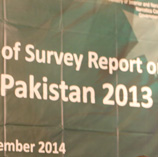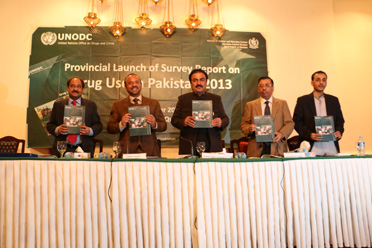High levels of drug use and dependency in Balochistan........Pakistan Drug Survey 2013 |
|

Quetta - 22 November 2014, The Drug Use in Pakistan 2013 Survey Report launched today in Quetta reveals how Pakistan's population aged 15 to 64 suffer from the devastating consequences of substance abuse. The Report estimates that 6 per cent - or 6.7 million people, age 15-64 years in Pakistan used drugs in the last 12 months. Although 4.25 million individuals are thought to be drug dependent, treatment and specialist interventions are in short supply, available to less than 30,000 drug users a year. Moreover, not all structured treatment is free of charge. In a country where almost a quarter of the population is estimated to be living on less than US$ 1.25 a day, the barriers preventing access to structured treatment are exceptionally high.
Mr. Rehmat Saleh Baloch, Minister for Health, Balochistan while inaugurating the launch of drug use survey 2013 said that the Ministry of Health, Balochistan is collaborating with UNODC for prevention of both drug use as and of HIV among people who inject drugs. Th Ministry in partnership with UNODC will continue its efforts for drug use prevention in the province.
Mr. Cesar Guedes, Representative UNODC, stated that National Drug Use Survey 2013 is for the first time conducted in Pakistan at provincial levels and it provides a comprehensive data on drug use and its implications on HIV transmission. The information contained in the report will form the baseline for future planning and designing of drug prevention and treatment programmes in Pakistan.

0.28 million people used illicit substances in the province in the past year whereas 17,000 drug users are estimated to be injecting drugs. Cannabis was found to be the most commonly used drug (2.8%). Vulnerability to HIV and other blood-borne diseases through injecting drug use is also considerable due to sharing of needles and syringes.
The Drug Use in Pakistan Survey Report is the result of a collaborative research effort between the Narcotics Control Division, Pakistan Bureau of Statistics, and UNODC. It aims to provide baseline information on the prevalence and patterns of drug use among the population aged 15 to 64 in order to inform Government, civil society and private-sector organizations in designing and implementing effective prevention, treatment and care services across the country.